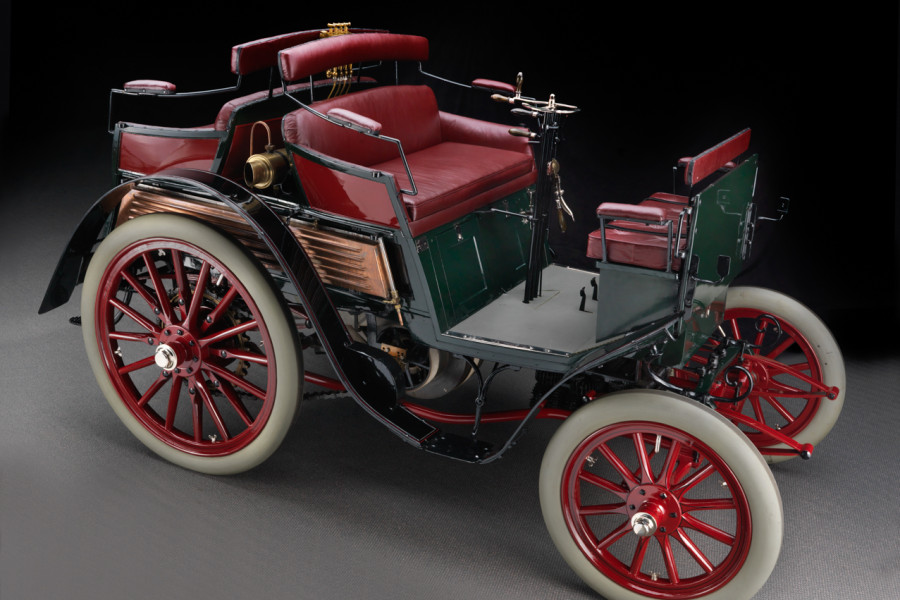1901 Dos-à-Dos

The descriptions of the Classic Cars in the Directory were partly generated or supplemented with the help of artificial intelligence (AI). The content may occasionally not always be entirely accurate or factually correct despite careful checking.
The Benz Dos-à-Dos 1901 was a groundbreaking vehicle that revolutionized the automobile industry. Considered by many to be the first modern automobile, it set the standard for engineering excellence that would become a hallmark of the Mercedes-Benz brand. The vehicle was designed by Karl Benz, the founder of Benz & Cie, and was known for its unique two-seater layout, which allowed for both driver and passengers to sit facing forward.
One of the key technical features of the Benz Dos-à-Dos 1901 was its engine. The vehicle was equipped with a four-stroke, single-cylinder gasoline engine that produced approximately 5 horsepower at 620 RPM. The engine featured an advanced fuel injection system that allowed for precise control of the fuel-air mixture, maximizing performance while minimizing fuel consumption.
Another innovative feature of the Benz Dos-à-Dos 1901 was its suspension system. The vehicle was equipped with a coil-spring suspension system at the front and rear, which provided a smooth and comfortable ride even on rough roads. The steering system was also advanced, featuring a rack-and-pinion mechanism that allowed for precise control of the front wheels.
The vehicle was constructed with a lightweight frame made of steel and wood, which reduced weight while maintaining strength and durability. The body was made of lightweight materials such as aluminum and magnesium, further reducing weight and improving performance.
The Benz Dos-à-Dos 1901 was also equipped with a number of safety features, including a hand-operated brake system that allowed for precise control of the vehicle's speed. The vehicle also featured a horn, which was used to alert other motorists and pedestrians of its presence.
Overall, the Benz Dos-à-Dos 1901 was a remarkable vehicle that set the standard for automotive engineering excellence. Its advanced features and innovative design continue to influence the development of modern automobiles today, making it an important landmark in the history of automotive technology.
Milestones
- 1900: Development of the Benz Dos-à-Dos model begins - 1901: First official presentation of the Benz Dos-à-Dos at the Frankfurt Motor Show - 1901: Production of the Benz Dos-à-Dos begins - 1901: Benz Dos-à-Dos wins the world's first international car race, the Paris-Berlin race - 1903: Benz Dos-à-Dos sets a new speed record, reaching 142 km/h (88 mph) - 1904: Production of the Benz Dos-à-Dos ends with a total of 120 units built.Technical
- The Benz Dos-à-Dos was produced in 1901 by the German company Benz & Cie. - It was a two-seater automobile with a unique seating arrangement where both passengers sat face-to-face in the same compartment, called "dos-à-dos" (back-to-back) in French. - The vehicle was powered by a rear-mounted 3-horsepower single-cylinder gasoline engine. - It featured a horizontal-tube radiator, which was a new design at the time and helped to improve cooling. - The transmission was a planetary-gear type, operated by a hand lever on the right-hand side of the driver's seat. - The car had a top speed of around 15 miles per hour and could travel up to 50 miles on a full tank of gasoline. - It had wooden-spoked wheels and solid rubber tires. - The frame was made of stamped steel, which made it lightweight and durable. - The Dos-à-Dos was also equipped with a belt-driven water pump and a battery ignition system. - Only a few hundred Benz Dos-à-Dos were ever produced, making it a rare and valuable collector's item today.CLASSIC CAR MATCHER